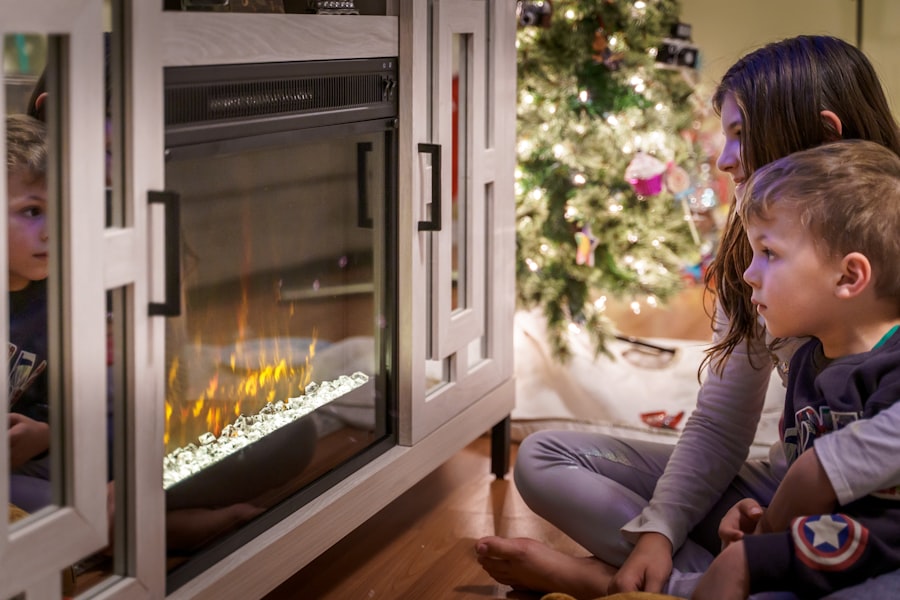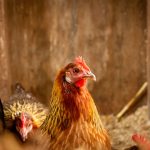Insulating the chicken coop is crucial for maintaining warmth during colder months. This process involves adding insulation to the walls, ceiling, and floor of the coop. Insulation helps retain heat generated by the chickens’ bodies and any supplemental heating sources, while also preventing drafts and moisture that can cause cold stress in chickens.
Various insulation materials can be used, including fiberglass, foam board, or recycled denim. Proper installation is essential to ensure there are no gaps where cold air can enter. While insulation is important, adequate ventilation is equally crucial.
Proper ventilation maintains good air quality and prevents moisture buildup, which can lead to respiratory issues in chickens. It also helps regulate the coop’s internal temperature, preventing it from becoming too hot or cold. Ventilation can be achieved by installing vents or windows that can be adjusted as needed.
Balancing insulation and ventilation is key to keeping chickens warm and healthy during winter months.
Table of Contents
- 1 Provide Deep Bedding
- 2 Use a Draft Blocker
- 3 Add a Roosting Bar
- 4 Encourage Natural Sunlight
- 5 Feed High-Energy Foods
- 6 Monitor for Signs of Cold Stress
- 7 FAQs
- 7.1 What are some natural ways to keep chickens warm without a heat lamp?
- 7.2 How can I insulate my chicken coop to keep it warm in cold weather?
- 7.3 What is deep bedding and how does it help keep chickens warm?
- 7.4 Why is ventilation important for keeping chickens warm in winter?
- 7.5 Are there specific breeds of chickens that are better suited for cold weather?
Key Takeaways
- Insulating the coop helps to maintain a comfortable temperature for the chickens during cold weather.
- Deep bedding provides insulation and warmth for the chickens, as well as absorbing moisture and odors.
- Using a draft blocker helps to prevent cold drafts from entering the coop and keeps the chickens warm.
- Adding a roosting bar allows the chickens to perch and keep their feet off the cold ground.
- Encouraging natural sunlight helps to provide warmth and light for the chickens during the winter months.
- Feeding high-energy foods helps to keep the chickens warm and maintain their energy levels during cold weather.
- Monitoring for signs of cold stress, such as shivering or decreased egg production, is important for ensuring the health and well-being of the chickens.
Provide Deep Bedding
What is Deep Bedding?
Deep bedding is a crucial factor in keeping chickens warm during the winter. It refers to a thick layer of bedding material, such as straw, wood shavings, or shredded paper, that is spread on the floor of the coop. This bedding not only provides a comfortable surface for the chickens to walk and rest on, but it also acts as insulation, helping to retain heat and keep the coop warm.
The Benefits of Deep Bedding
As the chickens scratch and move around in the bedding, it creates heat through the process of decomposition, further contributing to the warmth of the coop. In addition to providing insulation, deep bedding also helps to absorb moisture and odors, keeping the coop clean and dry. This is important for preventing respiratory issues and frostbite in chickens.
Maintenance is Key
It’s important to regularly add fresh bedding on top of the existing layer to maintain its insulating properties and absorbency. This ensures that the bedding continues to provide a comfortable and healthy environment for the chickens.
Deep bedding is a simple yet effective way to keep chickens warm and comfortable during the winter months.
Use a Draft Blocker

Drafts can be a major source of cold stress for chickens, so it’s important to take measures to block them out. One effective way to do this is by using draft blockers, which are essentially barriers that prevent cold air from entering the coop. Draft blockers can be made from various materials, such as foam insulation, weather stripping, or even old towels or blankets.
They can be placed around doors, windows, vents, and any other openings in the coop where cold air may seep in. In addition to using draft blockers, it’s important to regularly inspect the coop for any gaps or cracks where drafts may be entering. These should be sealed with caulk or another appropriate sealant to prevent cold air from getting in.
By blocking out drafts, you can help maintain a comfortable and warm environment for your chickens during the winter months.
Add a Roosting Bar
Roosting bars are essential for chickens to perch on at night, especially during the winter months when they need to keep their feet off the cold ground. Roosting bars should be placed at a height that allows the chickens to comfortably roost without their feet touching the ground or other surfaces. This helps to keep their feet warm and prevents them from getting frostbite.
In addition to providing warmth for the chickens’ feet, roosting bars also help to keep them safe from predators that may enter the coop at night. It’s important to ensure that there is enough space on the roosting bars for all of the chickens to comfortably perch without overcrowding. Adding a roosting bar is a simple yet effective way to help keep chickens warm and safe during the winter.
Encourage Natural Sunlight
Natural sunlight is essential for keeping chickens healthy and warm during the winter months. Sunlight provides warmth and helps to regulate their internal body temperature. It also helps to boost their immune system and overall well-being.
To encourage natural sunlight in the coop, it’s important to ensure that there are windows or other openings that allow sunlight to enter. In addition to providing natural sunlight in the coop, it’s also important to allow the chickens access to outdoor areas where they can bask in the sun. This can be achieved by creating a secure outdoor run or allowing them access to a fenced-in area during the day.
Providing access to natural sunlight is crucial for keeping chickens warm and healthy during the winter months.
Feed High-Energy Foods

High-Energy Foods for Winter
High-energy foods are crucial during the winter months as they provide a quick source of energy for your chickens. These foods are rich in fats and carbohydrates, which help to keep your chickens warm. Examples of high-energy foods include cracked corn, sunflower seeds, mealworms, and other high-protein treats.
A Balanced Diet is Key
In addition to high-energy foods, it’s vital to ensure your chickens have access to a balanced diet that includes plenty of protein, vitamins, and minerals. You can achieve this by providing a commercial feed specifically formulated for laying hens, as well as supplementing their diet with fresh fruits and vegetables.
Keeping Chickens Warm and Healthy
Providing high-energy foods and a balanced diet is essential for keeping your chickens warm and healthy during the winter months. By doing so, you’ll be able to help your chickens thrive even in the coldest of temperatures.
Monitor for Signs of Cold Stress
It’s important to regularly monitor chickens for signs of cold stress during the winter months. Cold stress can manifest in various ways, such as shivering, lethargy, decreased egg production, pale combs and wattles, and even frostbite on their feet or other extremities. If any of these signs are observed, it’s important to take immediate action to address the issue.
One way to help alleviate cold stress in chickens is by providing supplemental heat in the coop. This can be achieved by using heat lamps or heated pads placed in strategic locations within the coop. It’s important to ensure that these heating sources are safely installed and monitored to prevent any fire hazards.
In addition to providing supplemental heat, it’s also important to ensure that chickens have access to fresh water at all times. This can be achieved by using heated waterers or regularly replacing frozen water with fresh water throughout the day. Overall, monitoring for signs of cold stress and taking appropriate measures to address them is crucial for keeping chickens warm and healthy during the winter months.
By following these tips and providing proper care and attention, you can help ensure that your chickens stay comfortable and happy throughout the colder seasons.
If you’re looking for ways to keep your chickens warm without using a heat light, you may also be interested in learning about the best kind of coop for chickens. Check out this article to find out what type of coop is best suited for keeping your chickens warm and comfortable during the colder months.
FAQs
What are some natural ways to keep chickens warm without a heat lamp?
Some natural ways to keep chickens warm without a heat lamp include providing adequate insulation in the coop, using deep bedding for warmth, and ensuring good ventilation to prevent moisture buildup.
How can I insulate my chicken coop to keep it warm in cold weather?
You can insulate your chicken coop by using materials such as straw, hay, or wood shavings to create a deep bedding layer. Additionally, you can add insulation to the walls and ceiling of the coop using materials like foam board or reflective insulation.
What is deep bedding and how does it help keep chickens warm?
Deep bedding involves adding a thick layer of materials such as straw, hay, or wood shavings to the floor of the coop. This helps to trap heat and provide insulation, keeping the coop warm and cozy for the chickens.
Why is ventilation important for keeping chickens warm in winter?
Proper ventilation is important for keeping chickens warm in winter because it helps to prevent moisture buildup, which can lead to dampness and cold drafts in the coop. Good ventilation also helps to maintain air quality and prevent respiratory issues in the chickens.
Are there specific breeds of chickens that are better suited for cold weather?
Yes, some chicken breeds are better suited for cold weather due to their cold-hardy characteristics. Breeds such as the Plymouth Rock, Orpington, and Wyandotte are known for their ability to withstand colder temperatures and are well-suited for winter conditions.
Meet Walter, the feathered-friend fanatic of Florida! Nestled in the sunshine state, Walter struts through life with his feathered companions, clucking his way to happiness. With a coop that’s fancier than a five-star hotel, he’s the Don Juan of the chicken world. When he’s not teaching his hens to do the cha-cha, you’ll find him in a heated debate with his prized rooster, Sir Clucks-a-Lot. Walter’s poultry passion is no yolk; he’s the sunny-side-up guy you never knew you needed in your flock of friends!







